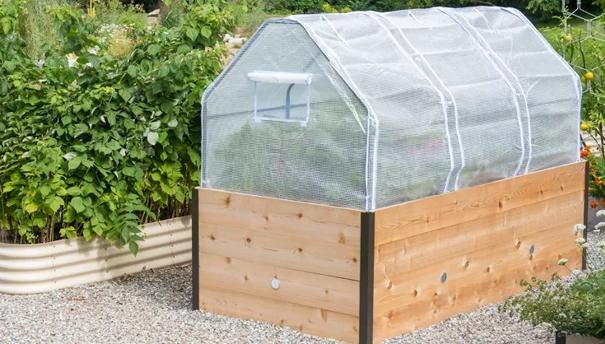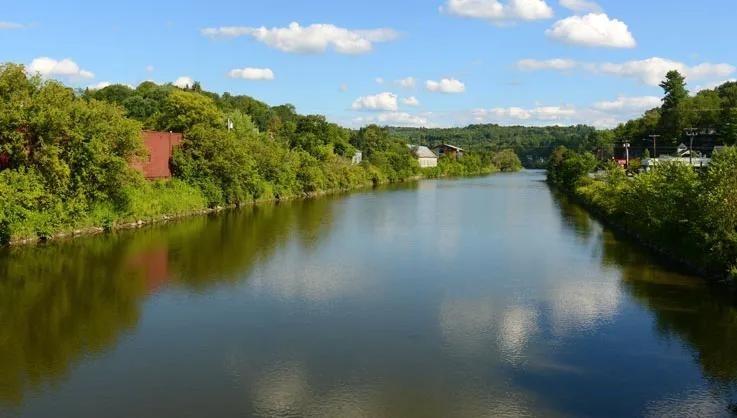 Lawns can be used to define gorgeous perennial flower beds
Lawns can be used to define gorgeous perennial flower bedsNothing sets off your home and gardens like a freshly mown lawn. But lawns now cover more than 40 million acres in the continental US, making it the single largest irrigated crop in the country. Turf lawns do not provide food or nutrition for wildlife (or humans!), they require an unbelievable amount of fresh water to maintain, and the emissions from mowers, leaf blowers, and other lawn equipment contributes to climate change.
Why not consider reducing the size of your lawn this year? With some thoughtful plant selection and placement, you can enjoy a lower maintenance yard that still looks neat and well cared for, while conserving water and providing pollinator habitat.
How to Begin
Start by taking a good look at your lawn. The most obvious lawn areas to eliminate are places where the grass doesn't thrive in the first place—shaded areas under trees, wet sections in the yard, and rocky outcroppings. And don't forget the steep bank where you risk your life mowing every weekend. These are all perfect candidates for alternative plantings.
Ask yourself how much lawn you really need:
- Do you require a fairly large grassy area for recreational activities like volleyball, horseshoes, or children's games?
- What about the front and side yards? Are they unused spaces that simply border the house?
- Pay attention to the directions of the foot traffic around your house. Could you put in permanent pathways rather than turf to help move people to the utility shed or back door?
Once you've determined what your yard is used for, you may find that you can dramatically decrease your lawn. But don't make any big changes — not right away. Do a little research before you start. Start small and replant over a period of months or even years. Begin with problem areas, such as a steep slope or a shady or wet zone. Here are five principles to keep in mind for non-lawn areas:
- Go for a natural look (rather than a formal one)
- Plant a limited number of plant varieties and group them in drifts
- Use evergreen ground covers for year-round color
- Save water—install drip-irrigation and use mulch.
- Incorporate paved surfaces
The Natural Look
A formal yard has lots of open space with plants strategically placed on edges of the lawn. The "natural" yard incorporates more native plants—trees, shrubs, ornamental grasses and flowering perennials—grouped in free-flowing swaths around the property.
By adding native plants, you can reestablish some of the natural ecosystems that your lawn replaced. In an Arizona yard, for example, you might consider reintroducing cactus and adding nectar-rich native flowers that will lure hummingbirds. More and more nurseries and garden centers offer a good selection of native plants. Being naturally well-suited to your area and casual rather than fussy, they make a good, low-maintenance lawn alternative.
Planting in Drifts
Growing a large number of different plant varieties is tempting, but it requires constant attention to keep them in their place. As tall varieties mature, they can block out the sun for short plants, and fast-spreading perennials will encroach on slower-growing plants. For easy care, keep your plantings simple. Select two or three varieties and group the plants together, giving them enough space to grow for many years without competition. You'll find that the shrubs and perennials will merge into one large planting that helps suppress weeds and creates a safe haven for toads, birds, and other small creatures.
Use Ground Covers
Although it takes some front-end attention to get ground covers well-established, they'll eventually form a ground-hugging mat that helps keep weeds at bay. For shady areas, try planting vinca (Vinca minor) under your trees or incorporate ferns, lily-of-the-valley and pachysandra in shaded corners. For spring color, plant flowering bulbs, Solomon's seal, and bleeding heart between the ground covers. In sunny, dry areas, daylilies are one of the fastest-spreading perennial ground covers you can grow. The low, spreading forms of thyme, juniper, euonymus and phlox also make a nice carpet.
Save Water
Plant varieties that are suited for your hardiness zone or are drought-resistant. Mulch your beds with 3-4" of shredded leaves, bark or wood chips. Mulch retains soil moisture and improves the quality of your soil. Water with drip-irrigation or soaker hoses to get water directly to the root zone and avoid wasteful runoff and loss through evaporation. Set up a rain barrel to capture rainfall from your roof.
Add Paved Surfaces
Installing low-maintenance surfaces and edging makes it easy to define a neat line along walkways and borders between lawn and garden. If you have a worn footpath in the lawn from the deck to the tool shed, or between the back door and compost pile, consider creating a fieldstone or gravel path between the two areas. You might also install a band of edging to keep turf from invading your plantings. Gravel beds also can be a very attractive way to define a border or lead you to another section of the yard.
How to Maintain What's Left of Your Lawn
Here are some things you can do to save even more work and grow a better looking, more earth-friendly lawn:
- Mow high: A higher cut of 2 1/2" to 3"encourages deeper, healthier roots. Tall grass is most likely to shade out weeds.
- Don't bag the clippings: Leave the grass clippings where they fall and you add free nutrients to the soil and stimulate biological activity. However, if your clippings are thick, wet and smothering the lawn, rake them up and compost them.
- Use a slow-release fertilizer: Slow-release, organic fertilizer will nourish your grass over a longer period of time than chemical fertilizers. It also stimulates moderate growth that doesn't require as much mowing.
- Re-seed bare patches with the right seed: Before buying seed, find out what thrives in your region. The most common problem with lawns is that the type of grass is not suited to the site. Is your lawn in the shade or sun? Most grass varieties (fescues, Kentucky bluegrass, and perennial rye), require full sun to remain lush and green — although they'll tolerate some shade. If your yard is partially shaded, plant grass varieties that are specially suited to shade. There are also new slow-growing grass varieties (fine fescues, tall fescues, bentgrass, and perennial rye) that take fewer mowings to keep them trim. Some of them are mixed with flowering clover and other low-growing attractive blooms that can be mowed without harm.






